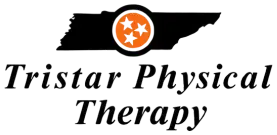Table of Contents
Rotator cuff injuries can cause significant pain and limited mobility in the shoulder. If you are experiencing shoulder pain, it is important to seek medical attention for a proper diagnosis. In this article, we will discuss the diagnosis, treatment options, and recovery process for rotator cuff injuries, with a focus on the role of physical therapy in the healing process.
Diagnosis
To diagnose a rotator cuff injury, healthcare providers will conduct a physical examination and may order imaging tests. During the physical exam, they will assess the strength of the muscles around the shoulder and in the arms. They will also move your arm into different positions and press on different parts of the affected shoulder to evaluate pain and range of motion.
Imaging tests that may be used to diagnose a rotator cuff injury include:
- X-rays: X-rays can visualize bone spurs or other potential causes of shoulder pain, such as arthritis. However, a rotator cuff tear itself will not be visible on an X-ray.
- Ultrasound: This test uses sound waves to produce images of soft tissues, such as muscles and tendons. It allows healthcare providers to assess the structures of your shoulder during movement and compare the affected shoulder to the healthy shoulder.
- Magnetic Resonance Imaging (MRI): MRI uses radio waves and a strong magnet to provide detailed images of the shoulder’s structures. This imaging test can help identify rotator cuff tears and other abnormalities.
Treatment
The treatment approach for rotator cuff injuries depends on the severity of the injury. In many cases, conservative treatments are effective in promoting healing. These treatments may include rest, ice, physical therapy, and medication for pain relief.
Physical Therapy
Physical therapy is often one of the first-line treatments for rotator cuff injuries. A physical therapist will design a personalized exercise program to help restore flexibility and strength to the shoulder. The exercises will be tailored to the specific location of the rotator cuff injury. Physical therapy is also crucial for the recovery process after rotator cuff surgery.
Injections
In some cases, a steroid injection into the shoulder joint may be recommended to alleviate pain and inflammation. These injections can provide temporary relief, but they may also weaken the tendon and reduce the success of future shoulder surgery.
Surgery
If conservative treatments do not provide sufficient relief, surgery may be necessary, especially for severe rotator cuff injuries. Different surgical options are available for rotator cuff injuries, including:
- Arthroscopic tendon repair: This minimally invasive procedure involves inserting a tiny camera and tools through small incisions to reattach the torn tendon to the bone.
- Open tendon repair: In certain situations, an open tendon repair may be a better option. This surgery involves making a larger incision to reattach the damaged tendon to the bone.
- Tendon transfer: If the torn tendon is too damaged to be reattached, surgeons may use a nearby tendon as a replacement.
- Shoulder replacement: In cases of massive rotator cuff injuries, shoulder replacement surgery may be necessary. A newer procedure called reverse shoulder arthroplasty can improve the stability of the artificial joint by reversing the ball and socket configuration.
Recovery and Rehabilitation
Recovery from a rotator cuff injury can take time and require a comprehensive rehabilitation program. Physical therapy plays a crucial role in the recovery process by helping restore strength, range of motion, and function to the shoulder.
During physical therapy, you may undergo various exercises and techniques, including:
- Range of motion exercises: These exercises help improve flexibility and restore normal shoulder movement.
- Strengthening exercises: Specific exercises target the muscles around the shoulder to rebuild strength.
- Manual therapy: A physical therapist may use hands-on techniques to mobilize the shoulder joint and surrounding tissues, promoting healing and reducing pain.
- Modalities: Therapeutic modalities, such as heat, ice, ultrasound, or electrical stimulation, may be used to reduce pain and inflammation.
- Functional training: As your shoulder heals, your physical therapist will guide you through activities and exercises that mimic your daily tasks or sports-specific movements.
The duration of physical therapy will vary depending on the severity of your injury and your body’s response to treatment. Your physical therapist will monitor your progress and adjust your treatment plan accordingly.
Conclusion
Rotator cuff injuries can be painful and debilitating, but with proper diagnosis, treatment, and rehabilitation, most people can regain full or near-full function of their shoulder. Physical therapy is a crucial component of the recovery process, helping to restore strength, flexibility, and range of motion. If you suspect a rotator cuff injury, seek medical attention to receive an accurate diagnosis and start appropriate treatment, including physical therapy.
For more information about rotator cuff physical therapy, please visit https://www.tristarpt.com.

